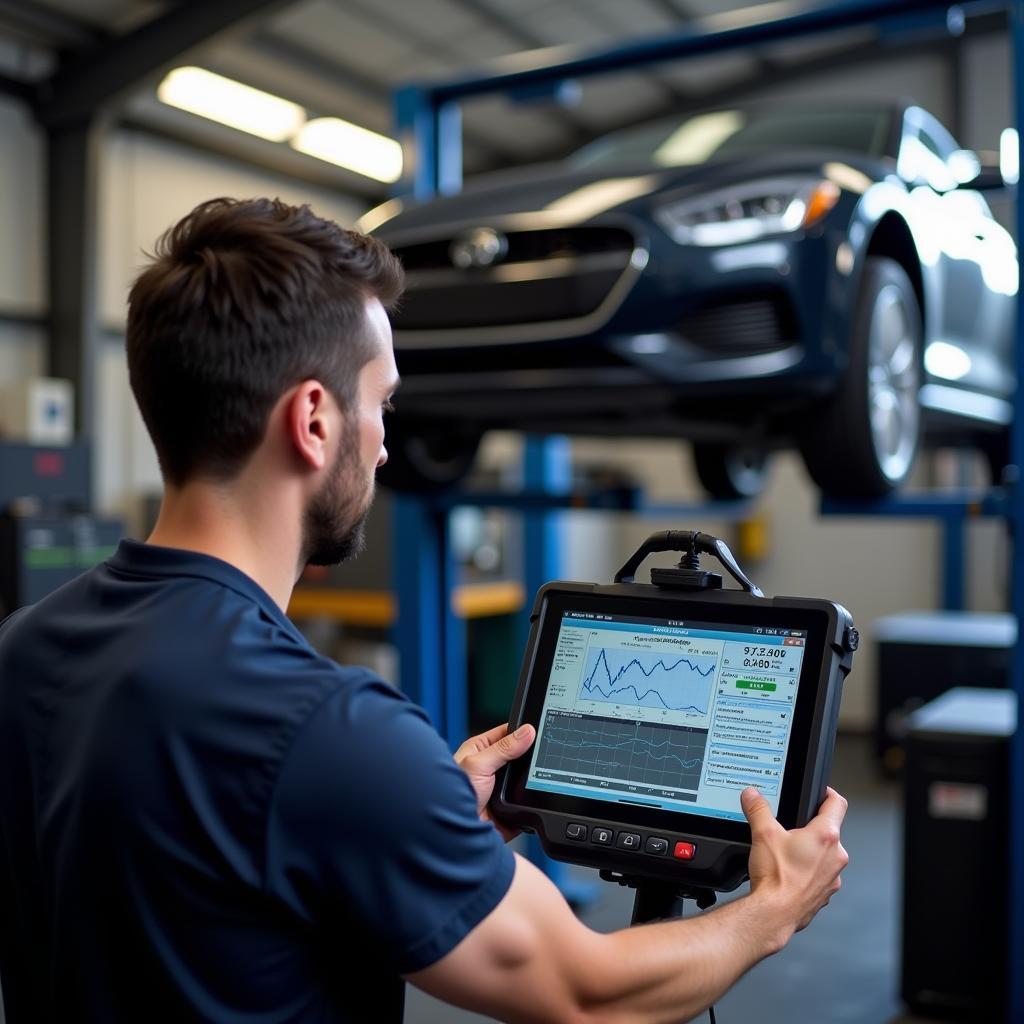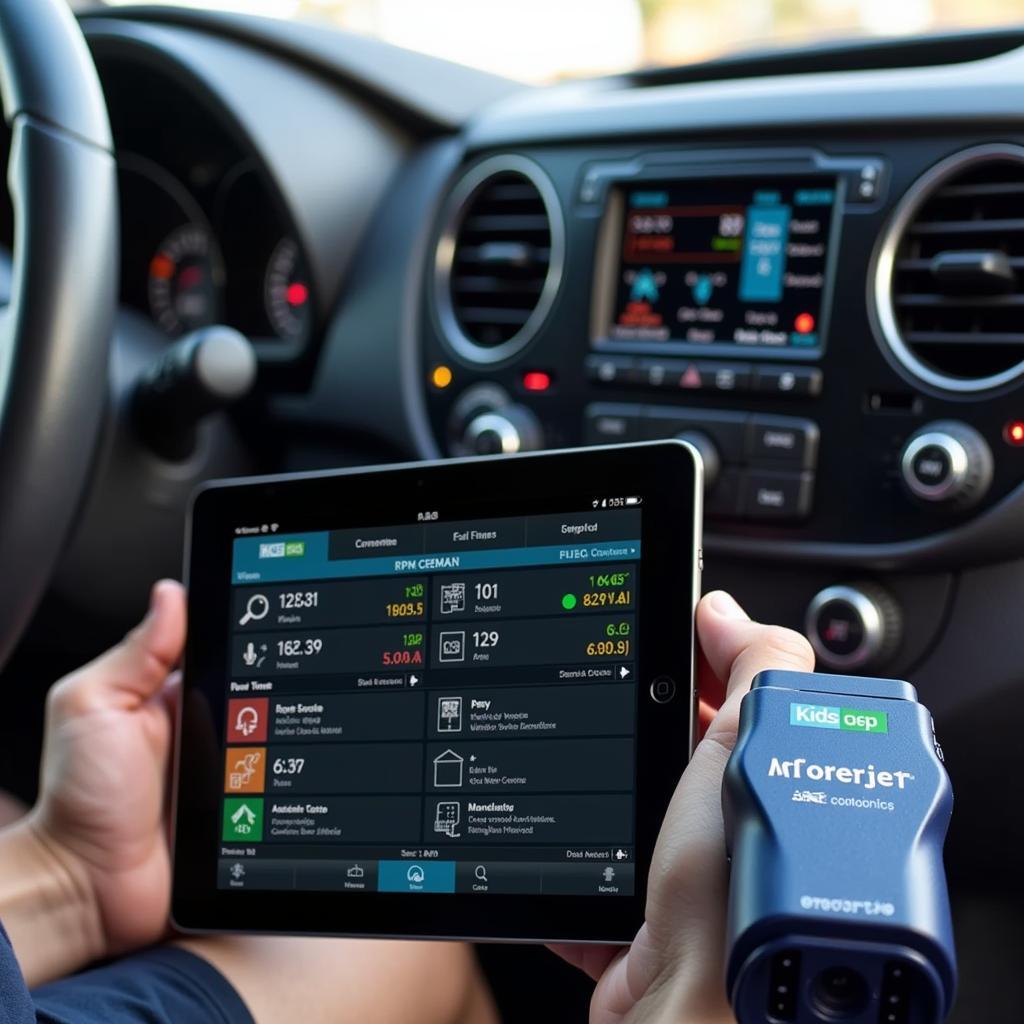In today’s technologically advanced world, cars are more than just mechanical marvels; they are complex networks of electronic systems and sensors constantly communicating with each other. When a problem arises, deciphering the cryptic warning lights and symptoms can feel like trying to crack a secret code. That’s where a Car Auto Diagnostic Scanner comes in, acting as your personal automotive translator.
This comprehensive guide delves into the world of car auto diagnostic scanners, equipping car owners, repair shops, and automotive technicians with the knowledge to choose the right tool and effectively diagnose car troubles.
Why Do You Need a Car Auto Diagnostic Scanner?
Gone are the days of relying solely on mechanics to diagnose car problems. A car auto diagnostic scanner empowers you to take control of your vehicle’s health by:
- Reading and Understanding Trouble Codes: When your car’s “Check Engine” light flashes, it’s trying to tell you something. A diagnostic scanner retrieves these trouble codes, which are standardized alphanumeric codes that pinpoint the potential source of the problem.
- Saving Time and Money: By identifying issues early on, you can potentially prevent minor problems from escalating into costly repairs. Moreover, knowing the specific trouble codes can save you from unnecessary diagnostic fees at a mechanic.
- DIY Diagnostics: For the automotive enthusiast, a diagnostic scanner opens up a world of possibilities for understanding and potentially fixing issues themselves.
- Improved Resale Value: Maintaining a detailed record of your vehicle’s health with a diagnostic scanner can instill confidence in potential buyers when it comes time to sell.
Types of Car Auto Diagnostic Scanners
Choosing the right car auto diagnostic scanner depends on your needs and budget. The market offers a range of options, each with varying capabilities:
- Basic Code Readers: These entry-level scanners are perfect for retrieving and clearing basic trouble codes. They are affordable and user-friendly, ideal for car owners who want to perform basic diagnostics.
- Bluetooth OBD2 Car Auto Diagnostic Scanners: These scanners connect wirelessly to your smartphone or tablet, offering greater convenience and portability. They often come with mobile apps that provide detailed code definitions, real-time data, and even troubleshooting tips.
- Advanced Professional Scanners: These high-end scanners are typically used by mechanics and professional technicians. They offer comprehensive diagnostic capabilities, including access to manufacturer-specific codes, bi-directional controls (allowing you to activate certain car components), and advanced programming functions.
- Specialized Scanners: Certain scanners cater to specific vehicle makes or models. These are particularly useful for vehicles with unique diagnostic protocols.
Choosing the Right Scanner: Key Features to Consider
Before investing in a car auto diagnostic scanner, keep these essential features in mind:
- Vehicle Compatibility: Ensure the scanner supports your car’s make, model, and year. Most modern vehicles use the OBD2 (On-Board Diagnostics II) standard, but older cars may require specific adapters.
- Code Reading Capabilities: Check if the scanner can read both generic (SAE) and manufacturer-specific trouble codes.
- Live Data Streaming: This feature allows you to view real-time sensor data, such as engine RPM, coolant temperature, and oxygen sensor readings, aiding in more in-depth diagnostics.
- Additional Features: Some scanners offer bonus features like ABS (Anti-lock Braking System) diagnostics, airbag system checks, and the ability to reset service lights.
- User Interface and Software: Choose a scanner with an intuitive interface, easy-to-understand menus, and clear code definitions. Some scanners offer multilingual support and software updates.
 Mechanic Using Diagnostic Scanner
Mechanic Using Diagnostic Scanner
Understanding and Using a Car Auto Diagnostic Scanner
Using a car auto diagnostic scanner is simpler than it might seem. Here’s a step-by-step guide:
- Locate the OBD2 Port: In most cars, the OBD2 port is located under the dashboard on the driver’s side, often near the steering column.
- Connect the Scanner: Plug the scanner into the OBD2 port.
- Turn the Ignition On: Turn the ignition key to the “On” position, but do not start the engine.
- Read the Codes: Follow the scanner’s instructions to retrieve the trouble codes.
- Interpret the Codes: Use the scanner’s built-in code library or consult a reliable online resource to understand what each code means.
- Clear the Codes: After addressing the underlying issue, use the scanner to clear the codes and reset the check engine light.
Common Car Auto Diagnostic Scanner Myths Debunked
- Myth 1: Scanners Fix Car Problems: Scanners diagnose, they don’t fix. They pinpoint the issue, but you’ll need to address the root cause through repairs or part replacements.
- Myth 2: All Scanners are Created Equal: Scanners vary significantly in their capabilities and features.
- Myth 3: You Need to be a Mechanic to Use One: Many scanners are user-friendly and designed for car owners of all technical levels.
 Car Diagnostic Software on Tablet
Car Diagnostic Software on Tablet
Taking Charge of Your Car’s Health
A car auto diagnostic scanner, whether a basic code reader or a professional-grade tool, is an invaluable asset for any car owner, mechanic, or automotive enthusiast. By providing insights into your car’s electronic systems, it empowers you to make informed decisions about maintenance, repairs, and overall car care.
For personalized assistance in choosing the right car auto diagnostic scanner for your needs, contact ScanToolUS at +1 (641) 206-8880 or visit our office located at 1615 S Laramie Ave, Cicero, IL 60804, USA. We’re here to help you demystify your car’s inner workings and keep you on the road with confidence.

Pingback: Scanner Not Communicating With Car: A Troubleshooting Guide - Car Scan Tool